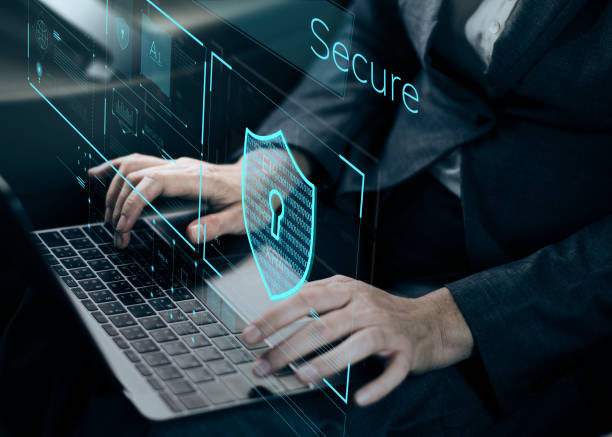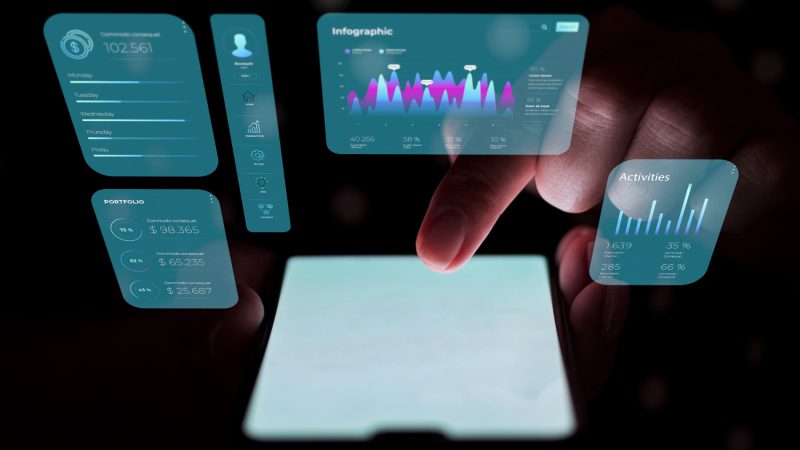How to Keep Your Business Secure in a BYOD World

Every device that connects to a business’s network can become a potential security threat. When it’s a company-issued device, it’s easier to control and remove or restrict it from your network. But in a bring-your-own-device world, where personal smartphones, tablets, and laptops are common, keeping everything secure requires a different approach.
Companies that allow customers and employees to connect to Wi-Fi with personal devices have a high risk of cybersecurity threats. Smaller organizations that don’t have network security plans and device-level protection methods in place increase their vulnerability. All it takes is one piece of malware on an employee-owned smartphone to bring your business to a halt.
While you could prohibit the use of personal devices in your business, that strategy probably won’t be popular. Also, remote work and certain business types, such as coffee shops and hotels, make a non-BYOD policy impractical. Nevertheless, businesses should acknowledge that personal gadgets pose a unique set of network security threats and take steps to manage them. Here’s how to keep your business secure.
Implement a Network Security Solution
No, a network security solution is not an anti-malware program. Although these applications are beneficial, they’re often inadequate for businesses. At the same time, enterprise-level security software is too much for small businesses with a handful of devices and employees.
Fortunately, you can still get the same level of protection for your network and the devices that connect to it. A small business solution like Plume WorkPass provides AI-based monitoring and access control tools. The monitoring piece stays on guard, scanning the network for threats and blocking them when there’s a problem. You’ll also receive alerts so you can see and manage the threats your network is facing.
The access control side of things lets you partition your Wi-Fi. You can designate different networks for customers and employees. While company-owned or critical devices get full access to the network, BYOD devices don’t. Staff members might be able to pull up folders on the network, but visitors can only surf the web. Meanwhile, all connected devices receive protection from malware, ransomware, and phishing attacks.
Require VPN for Remote Work
Employees who work remotely or retrieve information stored on your network from afar pose another type of risk. They may not only be using personal devices, but also unsecured Wi-Fi. There is little you can do to control the security of home internet connections or public Wi-Fi networks. However, you can require the use of a virtual private network (VPN).
VPN services, such as ExpressVPN, encrypt the data employees send and receive while they’re working from remote locations. Your staff’s devices first connect through separate public or private Wi-Fi networks. Then they must establish a secondary connection through VPN software that verifies they’re authorized for access. This is usually done using the employee’s work account or username and password.
The encryption helps shield sensitive information from prying eyes. While employees are using a VPN to retrieve information from your networks, other users connected to unsecured Wi-Fi won’t see it. More importantly, cybercriminals can’t gain access to sensitive data or control devices connected to your network.
Use a Password Manager and Two-Factor Authentication
As part of your BYOD policy, you can consider asking employees to use password managers and two-factor authentication. While these measures wouldn’t necessarily apply to staff’s personal apps, they would for business-related use. If employees use personal laptops to sign into company cloud accounts, they can store their credentials in password management apps.
A password manager can automatically enter a staff member’s unique login while concealing it. This eliminates the need to write down logins on physical or electronic sticky notes or in day planners. It also helps prevent passwords from being exchanged via email. Compromised passwords sometimes turn into high-profile data breaches, with damaging consequences.
Two-factor authentication creates another layer of protection and can help prevent the use of leaked passwords. Some cloud-based solutions allow you or your IT administrator to enable two-factor authentication for all logins. Others require the user to activate it via their account settings.
Two-factor authentication restricts access until the person verifies their identity through another method, such as a fingerprint or texted security code. This extra step can stop unauthorized use.
Provide Cybersecurity Training
Employee education on why and how personal devices put a company’s network at risk can go a long way toward preventing cyberthreats. It’s often human error and misunderstanding that are the root cause of many such threats. It may not seem like a big deal to connect a BYOD laptop to an employer’s network. But if there’s undetected malware on the machine, that seemingly innocent move can put every connected device at risk.
Training and education should include acceptable and non-acceptable uses of personal devices on the company’s network. Go over why protective measures like using a VPN and two-factor authentication are necessary. A trainer can also review how to detect phishing attempts and why it’s best practice not to click on links. Reviewing why BYOD policies are in place and how they protect all stakeholders’ interests will help secure buy-in and compliance.
If customers use your network, you might see some benefit from holding an onsite education class or presentation. Show them public Wi-Fi safety measures and how they can protect their data and devices. Review the reasons some online activities post a greater risk and how they impact businesses and other customers. You can also include a brief overview of why organizations offer public Wi-Fi.
Conclusion
Keeping your network secure is simpler when only company-owned devices connect to it. But many business models and today’s work environments have ushered in the reality of a BYOD world. Protective measures, including network security solutions and best practices, can no longer remain on a company’s wish list. Implementing extensive cybersecurity protections can prevent worse-case scenarios and let all stakeholders enjoy the benefits of network connectivity.






